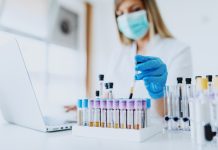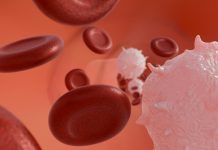False positives in cancer diagnosis cost NHS millions each year and cause huge anxiety across the nation, Wesley Baker, CEO of ANCON Medical discusses the impact of outdated cancer diagnosis
When dealing with serious illness, especially cancer, a fast, accurate and timely diagnosis is imperative in allowing patients the best possible chance of survival. Catching cancer at an early stage not only results in a less serious problem to treat but also leaves more options at a doctor’s disposal. Whilst research into innovative treatments and novel solutions to late stage cancers will often grab the headlines, it is likely that in future better diagnosis and screening will have a greater impact of survival rates and the current funding deficit that exists within the NHS.
In 2016 lung cancer killed 1.71 million people worldwide, earning it the title of the deadliest form of cancer, alongside being the third most common overall. The chances of surviving cancer are partially – but often crucially – determined by the stage at which it is caught, as a late diagnosis increases the chances with which cancer can spread and develop, resulting in higher mortality rates. When found early, over a third of people diagnosed with lung cancer survive for five years or more, in stark contrast to only 5 in 100 of people who are diagnosed much later on. An effective means to diagnose cancers early on is one of the best options for increasing survivability.
This trend extends to two of the other most common forms of the disease, namely prostate and breast cancers. For a stage I diagnosis a prostate cancer patient has a one-year survival rate of 100%, which drops to 85% for a stage IV diagnosis. This may not seem like a large drop, but it does signify the effectiveness of the treatment when caught at an early stage. The same is true of breast cancer with a 100% one-year survival rate dropping to 63% for stages I and IV respectively.
Current screening methods are often inaccurate and prone to human error. This is no more prevalent than in the screening of breast cancer. According to statistics from Cancer Research UK around 7 in 100 women will be called back for further tests after a routine mammogram, and from this around 8 in 1000 will be diagnosed as having cancer. This works out at a false positive rate of very nearly 90%. Although it is better to have a high rate of false positive than false negatives, this is an alarmingly high number, undoubtedly creating what could be one of the most stressful times in a person’s life while they wait for results of further tests.
For lung cancer, the story is much the same, CT scans have a 36% false positive rate with biopsies falling to a slightly lower rate of 27%. Further to the unnecessary stress and anxiety caused by this misdiagnosis, it also costs the NHS millions each year in wasted time and equipment costs. Adding to an already overburdened system of treatment.
This is not helped by the fact that X-rays are often inadequate for the early detection of lung cancer which, as shown, is so crucial to the chance of a patient’s survival. This inaccuracy is not the fault of the NHS or doctors but simply the limitations of a technology pioneered in the 19th century. A lack of resolution in the images produced makes it nigh on impossible to spot the cancer nodes that develop into more serious tumours later on.
Unfortunately, false positive screenings for cancer are not only expensive for the NHS but a large source of emotional turmoil for the patient and their loved ones. Worst of all, research by the American Association for Cancer Research recently found that false positives are commonplace and more likely to occur when a person is subject to multiple screenings.
Current screening methods for cancer rely heavily on human decision-making and interpretation. False positives from blood tests, biopsies, CT scans and X-rays, can and do occur as the result of human error.
From an individual point of view, false positives are hugely disruptive to the lives of patients and their families. While the NHS is incredibly thorough with their diagnosis, it is easy to convince yourself that the lengthy diagnosis is not a good sign, leading to massive levels of anxiety and stress. This is before we discuss the impact that inaccurate diagnosis has on the NHS’s budget and time restraints with misdiagnosis affecting treatment options and ultimately survival rates of the UK’s most deadly form of cancer.
Nanoparticle Biomarker Tagging (NBT) technology allows for quick, accurate and cheap diagnosis with a huge reduction in the number of false positives compared to traditional diagnosis methods. The technology analyses a patient’s breath to detect unique biological markers that indicate the presence of lung cancer, creating a biomarker profile, one of the most accurate forms of diagnosis.
Each form of cancer and illness creates distinct biomarkers that are not normally found in the body of a healthy individual. These unique compounds are exhaled from the lungs in normal breathing which can then be detected and identified. This leads to a lower incidence of false positive or misdiagnosis. The technology also allows for diagnosis to take place within 10 minutes at the point of care, eliminating the long wait for closure or diagnosis so normally associated with cancer detection.











